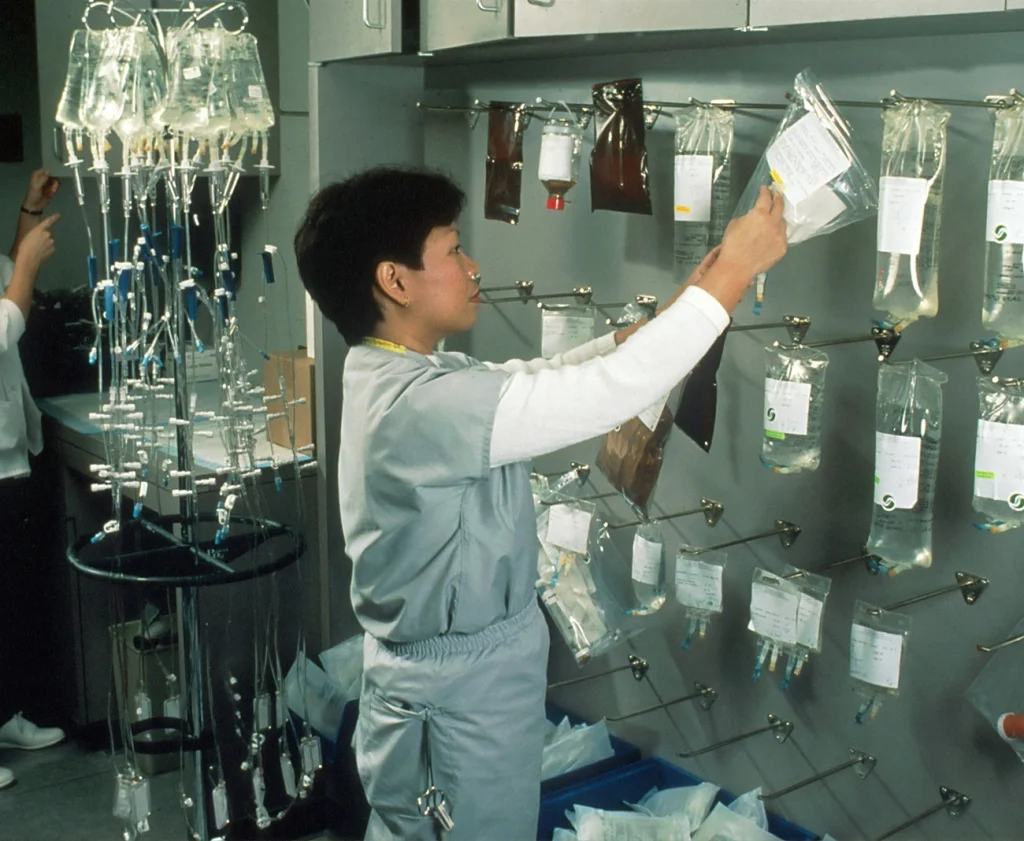Real-world tokenized assets examples for businesses
Tokenization is revolutionizing various industries by enabling businesses to create digital representations of physical and digital assets. These tokens can be easily traded, fractionalized, and managed, offering unprecedented liquidity and accessibility.

1. Physical Assets
Real estate
One of the most prominent examples of asset tokenization is in real estate. For instance, RealT has tokenized several New York and San Francisco apartment buildings. This allows investors to buy a small portion of the property for just $50, democratizing access to real estate investments and enabling fractional ownership.
Art and collectibles
Tokenizing art and collectibles is another exciting application. A notable example is the tokenization of Pablo Picasso’s “Fillette au beret.” This allows art enthusiasts to own a fraction of a valuable piece, broadening the investment opportunities in the art market.
Supply chain management
Tokenization also enhances supply chain visibility and efficiency. In the seafood industry, blockchain and tokenization have been used to improve transparency and traceability, ensuring the quality and origin of products from sea to table.
Precious metals (Gold, Silver)
Pax Gold has tokenized gold, allowing investors to buy and sell these tokens on the Ethereum blockchain. This innovation provides a secure and efficient way to invest in precious metals without needing physical storage.
Luxury goods
Luxury goods, including fine wines, are being tokenized to offer investment opportunities in high-value assets. Platforms like Aconomy have enabled investors to buy and trade tokenized shares of premium wine collections, opening up a new avenue for luxury asset investment.
2. Digital assets
Cryptocurrency
Cryptocurrencies are the most well-known examples of digital asset tokenization. Bitcoin, for instance, is a tokenized form of currency that can be tracked and traded on the blockchain, ensuring transparency and security in transactions.
Stock and bond
Swarm Markets has introduced DeFi-compatible stocks and bonds on the Polygon blockchain. This innovation brings the benefits of decentralization to traditional financial instruments, enhancing their accessibility and liquidity.
In-game assets
The gaming industry is also leveraging tokenization. Axie Infinity, a popular blockchain-based game, allows players to tokenize in-game assets, which can then be traded or sold, creating new economic opportunities within the gaming ecosystem.
Intangible assets
Tokenization also extends to intangible assets, such as intellectual property, patents, and trademarks. These assets can be digitized, fractionalized, and traded, unlocking new value streams for businesses.
Funds
Investment funds can also be tokenized, making it easier for investors to buy and sell shares. This increases liquidity and provides more flexible investment options for both institutional and retail investors.
Private Equity
Tokenizing private equity allows for greater accessibility and liquidity in the private markets. By digitizing shares of private companies, tokenization opens up investment opportunities to a broader audience and simplifies the trading process.
The asset tokenization use cases above illustrate how tokenization can revolutionize asset management, creating new opportunities for both businesses and investors. However, it is important to determine which assets are not suitable for tokenization. This critical examination continues in the following section, “What Type of Assets Shouldn’t be Tokenized? – A Cautionary Note for Businesses.”
What type of assets shouldn’t be tokenized? – A cautionary note for businesses
Now that we know tokenizing assets has revolutionized the way we perceive and interact with value. However, not all assets are suitable for tokenization. It’s crucial for businesses to be cautious and discerning when considering which assets to tokenize, as certain assets may not align with the technology or may present legal and regulatory challenges. Careful evaluation and consideration are essential to ensure successful tokenization endeavors.
Here’s a breakdown of what businesses should be cautious about tokenizing:
- Low liquidity assets: Tokenization thrives on a vibrant trading market. Assets with limited interested buyers, like a specific piece of machinery or a remote property, might struggle to attract investors and become illiquid tokens.
- Highly regulated assets: Securities and derivatives already have established regulations. Tokenizing these might invite unnecessary regulatory scrutiny or complications.
- Assets prone to physical damage: The value of a token is tied to the underlying asset. Fragile or perishable items like art or rare collectibles might not be ideal for tokenization due to risks of physical damage impacting value.
- Assets with complex ownership structures: Tokenization works best with clear and verifiable ownership. Assets with murky titles, multiple ownership layers, or usage rights might be difficult to represent accurately on a blockchain.
- Low-value assets: The cost of tokenization might outweigh the benefits for assets with inherently low value. Issuing and managing tokens for a single used car might not be practical.
Real-Life examples of failed asset tokenization projects
To better understand the challenges and limitations of tokenization, let’s look at some real-life examples where tokenization projects did not achieve the desired outcomes:
1. Physical art tokenization: Maecenas
Maecenas, a platform aimed at tokenizing fine art, encountered significant hurdles. Despite the initial excitement, the platform needed help with regulatory issues and liquidity problems. The tokenization of Andy Warhol’s “14 Small Electric Chairs” faced challenges in attracting enough investors to achieve liquidity, ultimately impacting the project’s success.
2. Real estate tokenization: Harbor
Harbor, a blockchain-based real estate platform, aimed to tokenize real estate properties to provide more accessible investment opportunities. However, the project faced regulatory challenges and difficulties aligning with existing securities laws. These issues led to delays and complications, demonstrating the complexities of tokenizing highly regulated assets.
3. Intellectual property tokenization: Machi X
Machi X aimed to create a marketplace for tokenizing intellectual property (IP) and copyrights. Despite launching a beta version and generating initial hype, the project struggled. The market price of the Machi X token plummeted, and the project now exists as little more than a Discord channel with a worthless token. The connection between the token and the IP was never validated, and the IP itself lacked verification, leading to its failure.

These examples highlight the importance of careful consideration and evaluation before undertaking asset tokenization projects. Tokenization offers exciting opportunities for democratizing access to various assets and enhancing liquidity. However, businesses must approach tokenization cautiously, understanding that not all assets suit this innovative technology.
Tips for choosing assets to tokenized – A guide for businesses
From the previous part, we’ve gathered valuable insights into tokenization’s challenges and potential pitfalls. Building on that understanding, here are some practical tips to help businesses make informed decisions when choosing which assets to tokenize.
1. Consider the asset’s characteristics
- Liquidity: Is the underlying asset currently difficult to buy and sell? Tokenization can improve liquidity by making it easier to divide ownership and trade the asset on a secondary market.
- Divisibility: Can the asset be easily divided into smaller units? This is important for fractional ownership, which can make the asset more accessible to a wider range of investors.
- Value storage: Does the asset have a stable or appreciating value? Tokenization can make it easier to store and track the value of the asset over time.
2. Align with business goals
- Fundraising: Is your business looking to raise capital? Tokenization can be a novel way to attract new investors and democratize access to ownership.
- Increased efficiency: Can tokenization streamline processes associated with the asset? For instance, tokenized real estate could simplify rental agreements and dividend payouts.
- Improved transparency: Can tokenization enhance trust and transparency around ownership and transactions? Blockchain technology offers an immutable record of ownership changes.
3. Regulatory landscape
- Security regulations: Depending on the type of asset being tokenized, there may be specific regulations to consider. Familiarize yourself with relevant security laws and how they apply to tokenized offerings.
- Compliance requirements: Ensure your tokenization process adheres to any existing legal and regulatory frameworks to avoid future complications.
4. Market demand
- Investor interest: Is there a demonstrated interest from investors in the tokenized asset class? Consider conducting market research to gauge potential demand.
- Existing use cases: Are there successful examples of similar assets being tokenized? Researching existing projects can provide valuable insights and potential pitfalls.
Businesses can more accurately choose which assets are best suited for tokenization by carefully weighing these considerations. Keep in mind that, despite its strength, tokenization is only sometimes a universally applicable solution. To determine whether tokenization may actually create new value for your organization, take the time to assess your assets and match them with your objectives.

Summary
Tokenization is transforming asset management by enhancing liquidity, transparency, and accessibility. In choosing assets for tokenization, business professionals should consider the characteristics of the assets, the regulatory environment, and the demand in the market. This approach allows businesses to benefit from democratized investment opportunities and streamlined processes. By adopting tokenization, companies can unlock new value and drive innovation within their organization.
How useful was this post?
Click on a star to rate it!
Average rating / 5. Vote count:
No votes so far! Be the first to rate this post.




